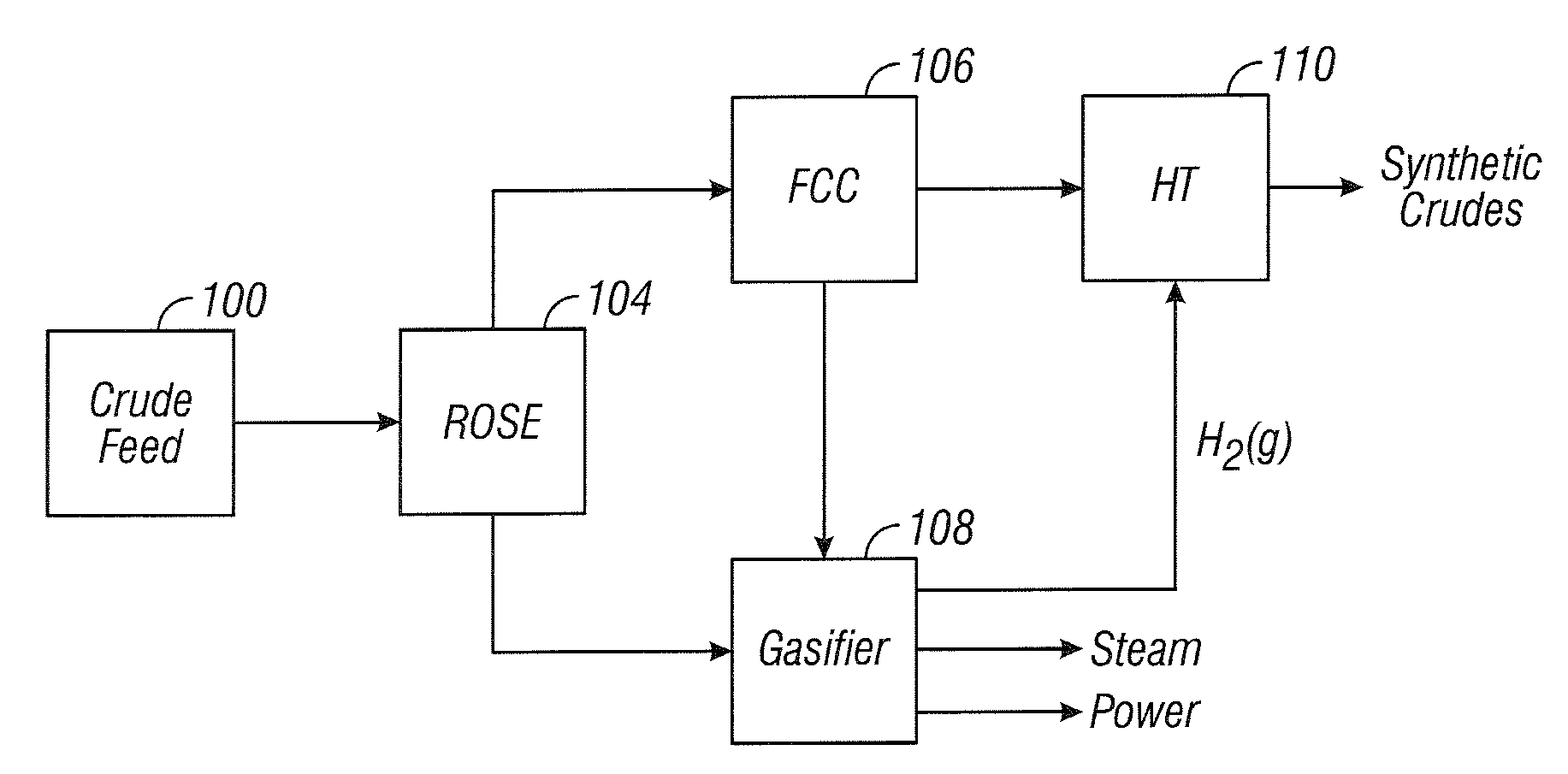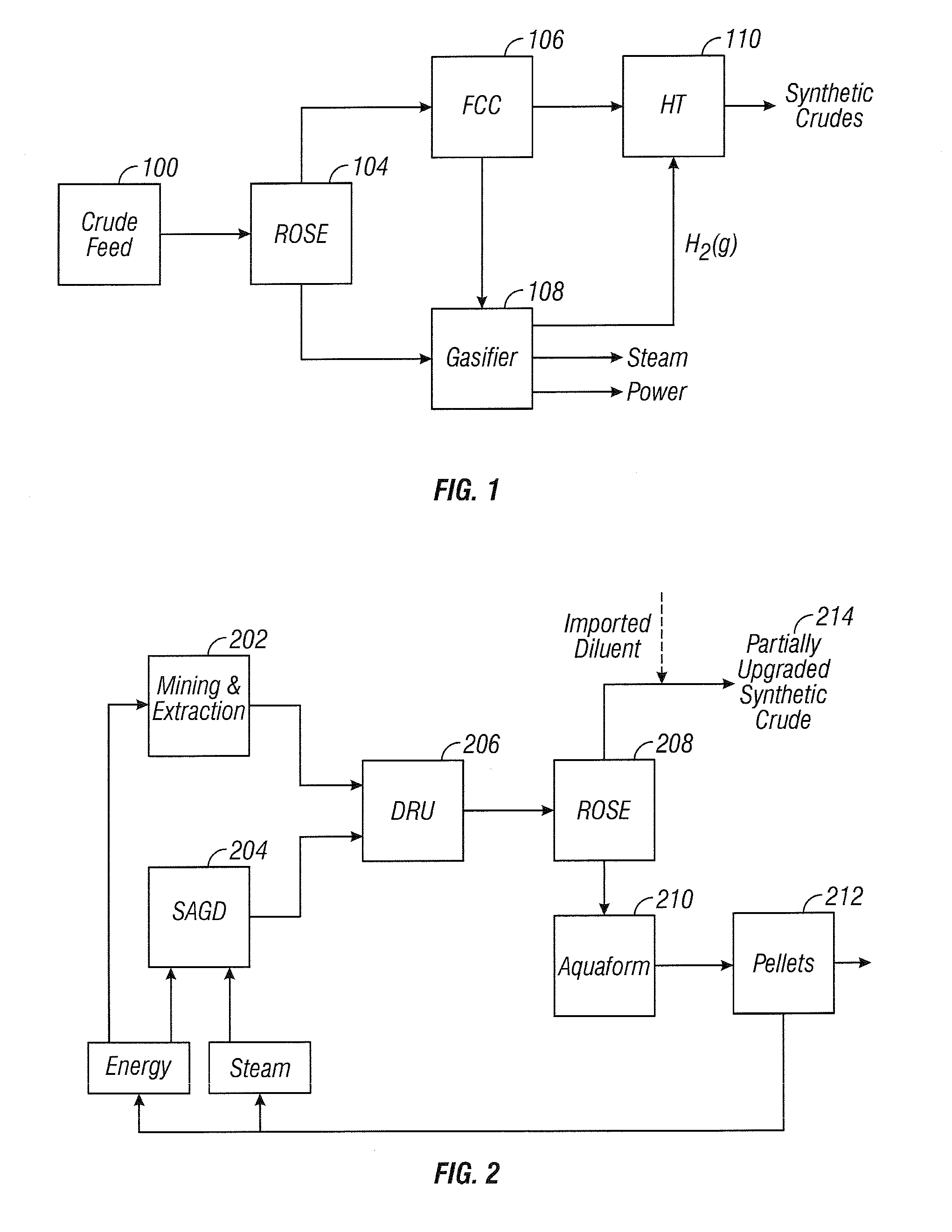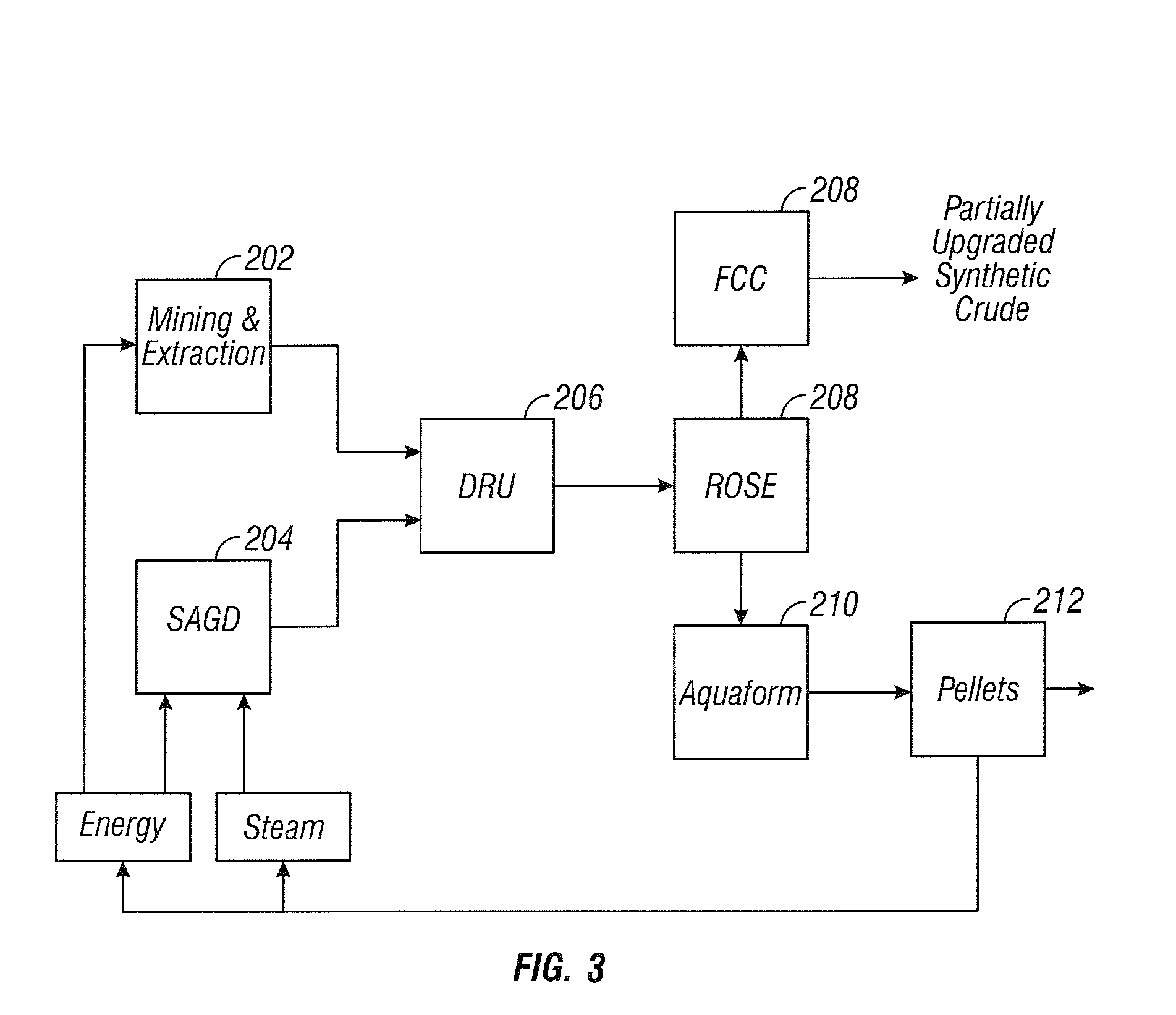Process for Upgrading Heavy Oil and Bitumen
a technology for upgrading and heavy oil, applied in the direction of solvent de-asphalting, thermal non-catalytic cracking, refining to eliminate heteroatoms, etc., can solve the problems of tar sands, pose processing problems, and posing additional problems in the upgrading of crude,
- Summary
- Abstract
- Description
- Claims
- Application Information
AI Technical Summary
Benefits of technology
Problems solved by technology
Method used
Image
Examples
example
[0058]Referring to the process shown in FIG. 5, feed comprising 28,900 m3 / d (182,000 BPD (42-gallon barrels per day)) of 10-15 API diluted bitumen and heavy oils is supplied to a diluent recovery unit (DRU) 308. The DRU 308 supplies 24,800 m3 / d (156,000 BPD) feed to the ROSE unit 314, where the unit 314 separates the feed into a DAO fraction and an asphaltene fraction. A 3,400 m3 / d (21,500 BPD) stream of the asphaltene fraction is supplied to the gasifier 338, and a 3,400 m3 / d (21,500 BPD) stream is supplied to the coker unit 354. An 18,000 m3 / d (113,000 BPD) resid oil stream is supplied from the ROSE unit 314 to the fluid catalytic cracking (FCC) unit 328. FCC unit 328 removes remaining metals and separates the feed into a light fraction of reduced metal content and a heavy decant oil. A 3,800 m3 / d (23,700 BPD) stream of the decant oil is supplied from the FCC unit 328 to the gasifier 338. A 12,600 m3 / d (80,000 BPD) stream of a light fraction consisting primarily of distillates, na...
PUM
| Property | Measurement | Unit |
|---|---|---|
| API gravity | aaaaa | aaaaa |
| temperatures | aaaaa | aaaaa |
| boiling point | aaaaa | aaaaa |
Abstract
Description
Claims
Application Information
 Login to View More
Login to View More - R&D
- Intellectual Property
- Life Sciences
- Materials
- Tech Scout
- Unparalleled Data Quality
- Higher Quality Content
- 60% Fewer Hallucinations
Browse by: Latest US Patents, China's latest patents, Technical Efficacy Thesaurus, Application Domain, Technology Topic, Popular Technical Reports.
© 2025 PatSnap. All rights reserved.Legal|Privacy policy|Modern Slavery Act Transparency Statement|Sitemap|About US| Contact US: help@patsnap.com



